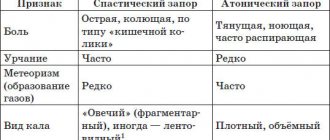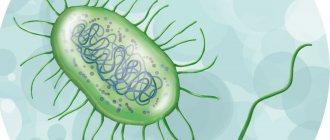Diet for traumatic and dystrophic arthritis and arthrosis
For arthritis caused by injuries, physical overexertion, nutritional disorders (for example, lack of vitamins), the main thing is a rational, nutritious diet containing sufficient amounts of proteins, fats, carbohydrates, vitamins and minerals. The only limitation is that the diet should not contain a large amount of easily digestible carbohydrates and refractory fats, since with diseased joints it is necessary to combat excess weight.
Jellied meat or bone broths, which contain a large amount of collagen, will be useful for restoring joints. Collagen provides strength to cartilage and bone tissue and is necessary for the restoration of damaged muscles and ligaments. Edible gelatin is also useful for this type of arthritis, from which you can prepare various jellies. Dairy products must be included in the diet, since, firstly, milk protein is easily absorbed by the body, and secondly, milk contains a lot of calcium, which is necessary to strengthen bone tissue. Animal protein contains lean meat and fish, vegetable protein - buckwheat porridge, beans and lentils. For more information about nutrition for arthrosis, see Diet for arthrosis
What should be included in the menu for arthrosis?
The menu of patients with arthrosis necessarily includes a variety of meat, fish and dairy products, eggs, fresh fruits and vegetables, and whole grain cereals. Priority is given to dishes low in fast carbohydrates and high in fiber.
A diet rich in plant foods for arthrosis solves three problems at once:
- saturating the body with vitamins and minerals that promote the absorption and synthesis of collagen;
- normalization of metabolism;
- prolonging the feeling of fullness and reducing body weight.
But animal protein is also vital! A vegetarian diet for arthrosis of the joints is detrimental - the regeneration of cartilage tissue critically slows down, and with protein deficiency, degenerative processes in the joint occur several times faster.
You can often come across the statement that fatty foods are harmful for arthrosis. But don't be fooled: foods high in unsaturated fatty acids are not only allowed, but also desirable. These include fish (preferably sea, in particular from the northern seas), seafood and algae, nuts, flaxseed, sesame, and avocado. But it is better to limit trans fats, cooking oil and other “unhealthy” fatty additives in the diet. To do this, you will have to eat less mayonnaise, chocolate and sausages.
Proper nutrition for arthrosis implies a balanced diet.
Based on the above, it is worth highlighting 6 “pillars” of the diet for arthrosis:
- Collagen (its deficiency leads to premature aging of the joint).
- Protein (building material for joints).
- Macro- and microelements (required - calcium, magnesium, potassium, selenium, sulfur).
- Vitamins (especially group B, as well as A, C, E).
- Polyunsaturated fatty acids (for the elasticity and strength of cartilage).
- Chondroitin and glucosamine sulfates (protect the joint from destruction and activate cartilage restoration).
Please note that not only products are important, but also the number of meals and serving size. For arthrosis, nutritionists recommend eating 3-6 times a day, if possible, at equal intervals of 2.5-3 hours. If you need to get rid of extra pounds for health purposes, divide your daily food intake into 5-6 meals of 100-150 g each. Give preference to lean meat and dairy products as the main sources of protein.
Sources of vitamins and minerals
Human metabolism is designed in such a way that the absorption of some nutrients (including collagen) is impossible without the presence of others in the diet. To ensure that nutrition for arthrosis benefits you, try to balance the vitamin and mineral composition of your menu as much as possible using the following products:
- Poultry (chicken, turkey), rabbit, beef, lean pork.
- Eggs (chicken, quail and any other).
- Sea fish (mackerel, mackerel, tuna, salmon, cod, sardine, flounder). Fish skin, fins, and small bones are especially rich in nutrients. Therefore, these products can be consumed in the form of fish bone meal - as a dietary supplement.
- Legumes. Beans, peas, beans, chickpeas and especially lentils. Please note that red beans have great nutritional value, but older people and people who are losing weight should choose white beans - they are easier to digest and give a long-lasting feeling of fullness.
- Dairy products. Milk, kefir, cottage cheese, fermented baked milk, ayran, kumiss, low-fat sour cream, as well as yoghurts without sweeteners should be present in the diet of a patient with arthrosis daily.
- Vegetables and greens. Almost all garden crops are useful, especially spinach, celery, bell peppers, and broccoli.
- Nuts, seeds and grains. Without exception, all nuts can be consumed daily for arthrosis (just don’t overdo it with peanuts). Pistachios are very healthy - but this popular snack can only be consumed without salt. Doctors recommend including oilseeds, such as flax, in your menu. They can be added to oatmeal or any other porridge. Cereals should be consumed whole (wheat, rice, oats). Brown rice is good for arthrosis.
- Fruits and berries. It is advisable to give preference to “local” seasonal fruits that undergo minimal chemical processing and fully retain their nutritional value. However, tropical fruits are also useful - bananas, pomegranates, pineapples, papaya, avocado and others. By the way, the healthiest berries - blueberries, cherries, cranberries, lingonberries - can be prepared for the winter and eaten frozen. Rose hips and rowan - dried, in the form of decoctions.
A diet for arthrosis does not at all imply strict restrictions. Indeed, it is better to eat foods fresh, steamed or stewed in their own juices. But you don’t have to deny yourself spices. Some of them (for example, ginger, mustard, red pepper, wasabi, horseradish, turmeric, cloves) even have an anti-inflammatory and analgesic effect!
Antioxidants
It is no secret that a common cause of arthrosis is age-related changes in the joints. Antioxidants help slow down the aging of cartilage tissue (including premature), reduce the effects of oxidative stress and protect cell membranes from destruction. The most effective antioxidants in nature are beta-carotene, vitamins B, C, E, and selenium. In addition to protecting cartilage tissue at the cellular level, these free radical fighters are capable of:
- strengthen large vessels and capillaries, which improves nutrition of periarticular tissues;
- launch active synthesis of healthy connective tissue (including strengthening ligaments and tendons, “unloading” sore joints);
- reduce pain and inflammation in the joint capsule;
- prevent further development of the disease in affected and still healthy joints.
Nutrition for joint arthrosis should be enriched with natural antioxidants and bioflavonoids. The following products will help with this:
- Berries: blueberries, cranberries, lingonberries, sea buckthorn, grapes (especially grape seeds), rowan (red and chokeberry), rose hips, black and red currants, pomegranate.
- Fruits: citrus fruits (and especially their zest), apricots.
- Vegetables: bell peppers, Brussels sprouts, carrots, tomatoes, other yellow and green fruits.
- Animal oils (including fish oil rich in omega-3 and omega-6 acids), liver.
- Green tea (especially oolong) and quality coffee.
Chondroprotectors
With arthrosis, new cells - chondrocytes - grow slowly. Often abnormal cartilage cells appear that are very unstable, quickly break down and cannot perform their natural functions. To restore metabolic processes in cartilage tissue, grow new healthy cells and strengthen old ones, building materials are needed - the so-called. chondroprotectors. They help the body synthesize “healthy” collagen, accelerate the regeneration of cartilage tissue, making it more resistant to the destructive effects of injuries, stress, dehydration, and uncomfortable temperatures.
Natural chondroprotectors are found in animal cartilage and skin, and other by-products. For example, ears and bones of livestock, sea fish. And also in invertebrates - terrestrial and aquatic mollusks, squids. A small amount of chondroprotectors is found in wheat germ, corn, legumes, and edible seaweed. Gelatin, agar-agar, pectin, and broths are also useful. Therefore, jelly, aspic, jellied meat on cattle bones are desirable dishes in the diet of patients with arthrosis.
For those whose health does not allow them to eat fatty or sweetened foods, as well as people who do not want to fundamentally change their diet for joint arthrosis, pharmaceutical chondroprotectors, which are produced in the form of tablets or capsules, are suitable.
The main correctors of the metabolism of bone and cartilage tissue in chondroprotectors are:
- glucosamine (a monosaccharide that is part of the natural lubrication of the joint and helps restore cartilage);
- chondroitin sulfate (has similar functions and complements the action of glucosamine);
- collagen of animal origin (supplies “building material” for cartilage growth).
Often such products are an extract from beef bones or New Zealand green-lipped molluscs. In addition to the active ingredients - mono- and polysaccharides, collagen - chondroprotectors usually include auxiliary elements, for example, zinc, selenium, antioxidants.
Diet for gouty arthritis
To prevent attacks of gouty arthritis, diet plays a vital role. With this type of arthritis, meat, fish and mushroom broths, smoked meats, salted and fried fish, caviar, legumes (lentils, peas, beans, beans, soy), sorrel, and spices (pepper, horseradish, mustard) are excluded from the diet. Alcohol, including beer, is strictly prohibited. The diet for gouty arthritis is recommended to be mainly vegetarian; dietary types of meat are allowed - chicken, turkey, rabbit, chicken eggs, boiled fish. For more information on nutrition for gout, see Diet for Gout.
Principle 1: Find and eliminate problem foods
Rheumatoid arthritis is an autoimmune disease. This means that the immune system fights against its own body, and first of all, against its own joints, causing their inflammation and gradual “failure”.
It has been noticed that if you consume foods that contribute to the occurrence of allergic reactions, the course of rheumatoid arthritis worsens. As in the case of ordinary allergies, what is dangerous for one person is completely tolerated by others. Therefore, the best way is to study your body by following an elimination diet for some time. How to do it?
To do this, for 1-2 weeks, a certain product in its pure form is completely excluded from the diet, as well as all those dishes that may contain it. For example, it is necessary to give up not only milk, but also all milk porridges, soups, cocktails with added milk, and ice cream. Then on day 1 the product is reintroduced into the diet, and over the next days we observe whether rheumatoid polyarthritis has worsened or not. After 3 days, we again introduce the test product into the diet for 1 day and observe again. To ensure accurate results, this can be repeated several times.
We exclude the “culprit” foods identified in this way from our diet, if not forever, then certainly during the period of exacerbation.
Observations show that the following foods most often cause exacerbation of rheumatoid polyarthritis (therefore, they need to be tested using an elimination diet first):
- citrus,
- whole milk,
- Wheat groats,
- rye,
- corn grits,
- oatmeal,
- pork,
- cocoa,
- nightshades: tomatoes, eggplants, potatoes.
Despite the prevalence of potatoes in Russian cuisine, many nutritionists do not consider them a particularly healthy product
Diet for rheumatoid arthritis
Rheumatoid arthritis is an autoimmune disease in the treatment of which diet is auxiliary. However, a proper diet for rheumatoid arthritis can significantly alleviate the patient’s condition during drug therapy and significantly prolong the state of remission. Diet therapy is aimed at reducing inflammation and increasing the body's immune defense.
A diet for rheumatoid arthritis should include a normal or moderately high protein content, a normal carbohydrate content while limiting sugar and foods containing it, a limited amount of animal fats and replacing them with vegetable fats (olive and flaxseed oil are especially recommended), and a limited amount of salt. The diet should contain sufficient amounts of vitamins and minerals. Meals should be divided (meals 5-6 times a day). Dishes are prepared boiled or baked. The diet for rheumatoid arthritis excludes meat, fish, mushroom broths and sauces, fatty meat and dairy products, beef, lamb, pork, cooking fats, smoked meats, canned food, pickles, marinades, savory snacks, spices and seasonings, butter dough, ice cream, strong tea and coffee, very cold or hot food. The diet can be built on the basis of diet No. 10, taking into account the considered nutritional features.
The effect of drug therapy for RA on the body
Traditional treatment of rheumatoid arthritis of both types (seropositive and seronegative), in addition to basic drugs that have a delayed effect (at the choice of a rheumatologist, gold drugs, cytostatics, antimalarials, sulfonamides, D-penicillamine), includes painkillers and hormonal drugs, which have many side effects. Proper nutrition is aimed at minimizing the harm caused by medications. On the other hand, the task of a nutritionist when selecting a menu is to ensure that the patient receives the maximum of nutrients and to exclude foods that cause an exacerbation of the pathology (more on this below).
Groups of auxiliary drugs and their effect on the body of a patient with rheumatoid arthritis:
- non-steroidal anti-inflammatory drugs (NSAIDs);
- corticosteroids.
On the left is a stomach ulcer due to long-term use of NSAIDs, on the right is bone loss (osteoporosis) due to long-term hormonal therapy
Nonsteroidal anti-inflammatory drugs (NSAIDs)
Medicines in this group have a negative effect on the mucous membrane of the stomach and intestines, provoking an exacerbation of the patient’s existing gastritis, stomach or duodenal ulcers, or causing their appearance with long-term use. The diet of a patient with RA should include foods (meals) that would protect the gastrointestinal tract from such aggressive effects.
Corticosteroids
Hormonal drugs have a destructive effect on most organs and systems of the human body, especially with long-term use. However, if the patient’s arthritis activity is off the charts, such remedies cannot be avoided. In such a situation, proper and balanced nutrition comes first, helping in a number of cases (increased blood sugar levels, increased blood pressure, irritation of the gastric mucosa up to the appearance of ulcers, increased blood viscosity and increased risk of blood clots, decreased bone density) to minimize the negative impact of treatment.
On a note. Banana is a fruit that can replace most antacids (neutralize the effect of gastric juice). In addition, it contains a lot of potassium and carotene, which is good for the heart, which often suffers from rheumatoid arthritis, as well as other vitamins, macro- and microelements. A couple of bananas a day can, in a fairly short time, regulate blood pressure and sugar levels, improve mood and have a beneficial effect on the stomach. However, if the prothrombin index is high, eating them is not recommended.
Diet for rheumatoid arthritis (rheumatism of the joints)
For acute rheumatoid arthritis, it is recommended to take diet No. 10a as the basis of the diet. The main purpose of this diet is to reduce inflammation and metabolic disorders in the body, increase the effectiveness of drug treatment and reduce the side effects of certain medications.
The amount of proteins in such a diet is within the physiological norm, mainly dairy proteins - milk, cottage cheese, lactic acid drinks, cheese, eggs, fish. The amount of fat is limited, mainly vegetable oils are recommended, butter is allowed, and refractory fats - lamb, beef, pork - are excluded. Limit easily digestible carbohydrates (honey, sugar), but increase the amount of vegetables, fruits and berries in the diet.
In a diet for rheumatoid arthritis, the use of table salt is sharply limited. The amount of free fluid is reduced to 1 liter per day. Food is taken in small portions 5-6 times a day.
A diet for rheumatoid arthritis should provide a large amount of vitamins, so in addition to fruits and juices, it also includes decoctions of rose hips, lemons, black currants, bran decoction, and a yeast drink.
What does the body of a RA patient require?
As a rule, basic therapy for rheumatoid arthritis is aimed at suppressing the patient’s overly strong immune system. Most often, the drug of choice for rheumatologists is Metatrexate. Despite good tolerance by patients and smoothed side effects against the background of a pronounced positive effect, damage is still caused to the body. In such a situation, it must be supported with nutrition - introduced into the diet:
- Diet for rheumatoid arthritis - allowed and prohibited foods, recipes with photos
- ascorbic acid (acts as a hormonal stabilizer, a strong antioxidant);
- bioflavonoids (reduce the permeability of the vascular wall, bind free radicals);
- Niacin (helps the stomach and strengthens blood vessels).
Ascorbic acid or vitamin C is found in Brussels sprouts, broccoli, bell peppers, rose hips, persimmons, sea buckthorn, jacket potatoes, peaches, apricots, fresh green peas, and sauerkraut.
Bioflavonoids of various types are found in the following products: bee propolis, medicinal herbs - tansy, cornflower, knotweed, St. John's wort, immortelle (maximum concentration in juice), berries - blueberries, red grapes (especially the skin), lingonberries, strawberries, blackberries. Green tea is also rich in them.
Niacin (niacin or vitamin B3) can be obtained from tuna, turkey and chicken meat, liver, sunflower seeds, legumes, mushrooms, wheat and buckwheat sprouts, and yeast.
On a note. Even knowing where what nutrients are found, it is difficult to create the right menu on your own. You should not experiment on yourself - seek help from a rheumatologist and nutritionist.
Diet for arthritis - general recommendations
For people with all types of arthritis, there are a few general guidelines worth paying attention to.
Foods containing omega-3 fatty acids should be included in the diet for arthritis . These substances reduce inflammation, which alleviates the symptoms of arthritis. Most omega-3 fatty acids are found in sea fish, in its fatty varieties, but if it is contraindicated for you, pay attention to flaxseed oil. It is easier to digest and also has a healing effect due to the content of the same healthy fatty acids.
For all types of arthritis, you should give up strong tea, coffee, and reduce alcohol consumption. The diet for arthritis limits, and often completely excludes, pickles, hot seasonings and spices. But there are exceptions here. Some studies have found the positive effects of turmeric and ginger. However, you should be careful here and exclude allergic reactions.
Although there is no solid scientific evidence on this matter, some studies have shown that plants of the nightshade family - potatoes, bell peppers, tomatoes, eggplants - can have a negative effect on the condition of patients with arthritis. If you notice a deterioration in your health after eating these foods, eliminate them from your diet.
The main thing to remember: the diet for arthritis should be balanced, with a sufficient content of vitamins and minerals, preferably low in calories.
Read more about NANOPLAST forte
Diets during remission
During periods of remission, strict restrictions can be lifted. However, you should eat prohibited foods no more than several times a week in limited portions.
The following products can be added to the menu during remission of rheumatoid arthritis:
- bread made from rye flour;
- beef, veal and pork in small portions;
- offal;
- coffee, tea, freshly squeezed juices, compotes;
- pasta;
- nuts;
- boiled potatoes.
Principle 7: Eat with Gratitude
Rheumatoid arthritis, along with bronchial asthma and gastric ulcers, are diseases whose exacerbation can provoke stress and strong negative emotions.
The habit of eating with gratitude allows the patient to neutralize the effects of negative factors, because... In response to positive emotions, the body produces substances that have analgesic and anti-inflammatory properties. And a calm atmosphere promotes eating at a leisurely pace, which is extremely important and necessary for the stomach.
Reviews and results
Medical practice, as well as reviews from most patients, indicate that dietary nutrition for arthritis of various etiologies plays an important role in the treatment process.
- “... I do athletics (all-around). However, already for several months after training, the legs become very tired, the knee joint swells, pain appears, both after physical activity and after a state of rest. I went to the doctor and took an x-ray, which showed a narrowing of the joint space. Diagnosis: arthritis of the knee joint. They prohibited exercise and prescribed treatment. They said that if you have arthritis of the knee joint, you need to follow a special diet. I hope that I can return to sports”;
- “... I have been suffering from rheumatoid arthritis for almost 10 years. Periodically (during an exacerbation) I go on a strict diet. In addition to medications and diet, I practice various traditional methods of treatment. This way we can more or less maintain health.”
Types of joint polyarthritis
Polyarthritis can affect both large and small joints of the limbs, as well as the joints of the jaw and spine. Certain types of disease may have a characteristic localization, which indirectly helps in the diagnosis of polyarthritis. For example:
- Rheumatoid polyarthritis. It is characterized by symmetrical damage to the joints, most often the wrist and interphalangeal joints, with a gradual increase in the symptoms of polyarthritis. The knee and elbow joints are often affected. Joint pain can be complemented by disorders of the nervous, cardiovascular system, vision and kidney problems.
- Reactive polyarthritis. It mainly affects the joints of the legs. The first signs of polyarthritis can appear from 2 weeks to 3 months after illness with salmonellosis, yersiniosis, mycoplasmosis, cystitis, pneumonia, bronchitis, prostatitis, pharyngitis and other infectious diseases. May be accompanied by damage to the mucous membranes and/or pain in the heart.
- Metabolic polyarthritis. It disrupts the functioning of the joints of the legs (metatarsal, ankle, knee and others), manifestations are paroxysmal in nature. Usually the disease worsens after a violation of the diet for the underlying disease.
- Infectious polyarthritis. It occurs as a result of specific infectious diseases - tuberculosis, syphilis, dysentery, brucellosis, gonorrhea - and primarily affects large joints. Pain manifests itself primarily in the shoulder, elbow, ankle, knee, and, less commonly, hip joints.
- Psoriatic polyarthritis. Despite the characteristic cause, symptoms of polyarthritis may appear before skin manifestations of the disease. It usually affects the interphalangeal joints, which gives the fingers a characteristic spindle-shaped shape.
- Idiopathic juvenile polyarthritis. Asymmetrically affects large joints, incl. cervical spine and temporomandibular.
Fully or partially limited products
Nutrition for arthritis involves the complete exclusion of fatty meat and fish broths from the diet; red meats (pork, beef) and various types of offal (tongue, liver, brains), as well as products derived from them - ham, semi-finished meat products, ham, various sausages. It is prohibited to include all pickled, canned, smoked and salted foods in the diet. Any hydrogenated products (margarine, mayonnaise), animal fats, and cooking oil are excluded. It is not recommended to include premium flour products, starch-containing products, yeast and strong black tea, coffee, confectionery, chocolate, and cocoa in your diet.
It is prohibited to include in the diet crustaceans and various seafood (squid, crabs, shrimp, mussels, oysters), seasonings based on them, red caviar, anchovies, as well as plant products of the nightshade family - tomatoes and all tomato products, potatoes, eggplants, sweet peppers, seasonings and spices, paprika. The consumption of grapes, citrus fruits, plums, avocados, pomegranates, strawberries, strawberries, raspberries, and currants is limited. It is prohibited to consume whole milk, vinegar, legumes, fatty dairy products, honey, jam, jam, snacks, alcohol and drinks containing carbon dioxide.
Table of prohibited products
| Proteins, g | Fats, g | Carbohydrates, g | Calories, kcal | |
Vegetables and greens | ||||
| eggplant | 1,2 | 0,1 | 4,5 | 24 |
| beans | 6,0 | 0,1 | 8,5 | 57 |
| peas | 6,0 | 0,0 | 9,0 | 60 |
| chickpeas | 19,0 | 6,0 | 61,0 | 364 |
| salad pepper | 1,3 | 0,0 | 5,3 | 27 |
| soybeans | 34,9 | 17,3 | 17,3 | 381 |
| tomatoes | 0,6 | 0,2 | 4,2 | 20 |
| beans | 7,8 | 0,5 | 21,5 | 123 |
| horseradish | 3,2 | 0,4 | 10,5 | 56 |
| lentils | 24,0 | 1,5 | 42,7 | 284 |
| sorrel | 1,5 | 0,3 | 2,9 | 19 |
Fruits | ||||
| figs | 0,7 | 0,2 | 13,7 | 49 |
Berries | ||||
| grape | 0,6 | 0,2 | 16,8 | 65 |
| cranberry | 0,5 | 0,0 | 6,8 | 26 |
| raspberries | 0,8 | 0,5 | 8,3 | 46 |
Mushrooms | ||||
| mushrooms | 3,5 | 2,0 | 2,5 | 30 |
Snacks | ||||
| potato chips | 5,5 | 30,0 | 53,0 | 520 |
Flour and pasta | ||||
| pasta | 10,4 | 1,1 | 69,7 | 337 |
Bakery products | ||||
| buns | 7,9 | 9,4 | 55,5 | 339 |
Confectionery | ||||
| jam | 0,3 | 0,1 | 56,0 | 238 |
| pastry cream | 0,2 | 26,0 | 16,5 | 300 |
Ice cream | ||||
| ice cream | 3,7 | 6,9 | 22,1 | 189 |
Chocolate | ||||
| chocolate | 5,4 | 35,3 | 56,5 | 544 |
Raw materials and seasonings | ||||
| mustard | 5,7 | 6,4 | 22,0 | 162 |
| mayonnaise | 2,4 | 67,0 | 3,9 | 627 |
| sugar | 0,0 | 0,0 | 99,7 | 398 |
Dairy | ||||
| baked milk | 3,0 | 6,0 | 4,7 | 84 |
| cream | 2,8 | 20,0 | 3,7 | 205 |
| sour cream 25% (classic) | 2,6 | 25,0 | 2,5 | 248 |
| sour cream 30% | 2,4 | 30,0 | 3,1 | 294 |
| Ryazhenka 6% | 5,0 | 6,0 | 4,1 | 84 |
Meat products | ||||
| pork | 16,0 | 21,6 | 0,0 | 259 |
| pork liver | 18,8 | 3,6 | 0,0 | 108 |
| pork kidneys | 13,0 | 3,1 | 0,0 | 80 |
| salo | 2,4 | 89,0 | 0,0 | 797 |
| beef | 18,9 | 19,4 | 0,0 | 187 |
| beef liver | 17,4 | 3,1 | 0,0 | 98 |
| beef brains | 9,5 | 9,5 | 0,0 | 124 |
| mutton | 15,6 | 16,3 | 0,0 | 209 |
| bacon | 23,0 | 45,0 | 0,0 | 500 |
Sausages | ||||
| smoked sausage | 28,2 | 27,5 | 0,0 | 360 |
Bird | ||||
| duck | 16,5 | 61,2 | 0,0 | 346 |
| goose | 16,1 | 33,3 | 0,0 | 364 |
Fish and seafood | ||||
| fried fish | 19,5 | 11,7 | 6,2 | 206 |
| smoked fish | 26,8 | 9,9 | 0,0 | 196 |
| Red caviar | 32,0 | 15,0 | 0,0 | 263 |
| squid | 21,2 | 2,8 | 2,0 | 122 |
| shrimps | 22,0 | 1,0 | 0,0 | 97 |
| mussels | 9,1 | 1,5 | 0,0 | 50 |
| canned fish | 17,5 | 2,0 | 0,0 | 88 |
| sardine in oil | 24,1 | 13,9 | — | 221 |
| salmon | 21,6 | 6,0 | — | 140 |
| mackerel | 18,0 | 13,2 | 0,0 | 191 |
| cod (liver in oil) | 4,2 | 65,7 | 1,2 | 613 |
Oils and fats | ||||
| animal fat | 0,0 | 99,7 | 0,0 | 897 |
| cooking fat | 0,0 | 99,7 | 0,0 | 897 |
Alcoholic drinks | ||||
| white dessert wine 16% | 0,5 | 0,0 | 16,0 | 153 |
| red dessert wine | 0,5 | 0,0 | 20,0 | 172 |
| vodka | 0,0 | 0,0 | 0,1 | 235 |
| cognac | 0,0 | 0,0 | 0,1 | 239 |
| liquor | 0,3 | 1,1 | 17,2 | 242 |
| beer | 0,3 | 0,0 | 4,6 | 42 |
Non-alcoholic drinks | ||||
| coffee | 0,2 | 0,0 | 0,3 | 2 |
| black tea | 20,0 | 5,1 | 6,9 | 152 |
| * data is per 100 g of product | ||||
Comments from nutritionists
In many letters, patients ask what the diet should be for arthritis of the fingers. Unfortunately, there is no definite answer, since therapeutic nutrition depends on many factors and, first of all, on the etiology of arthritis of the fingers . Arthritis of the fingers is a collective concept. The most common articular pathology of the hands occurs in rheumatoid arthritis , gout , psoriasis , and after injuries. Therefore, first of all, it is necessary to exclude rheumatoid arthritis. To do this, blood is donated for cyclic citrulated peptide (Anti-CCP) and citrulated vimentin (Anti-MCV). These are the specific and most reliable types of laboratory tests today. All so-called “rheumatic tests” in the diagnosis of rheumatoid arthritis are not decisive. An x-ray of the hands is also required. And only after making an accurate diagnosis can you prescribe a special diet.









